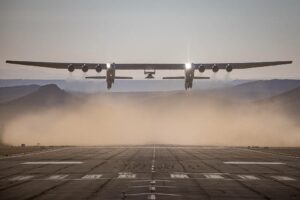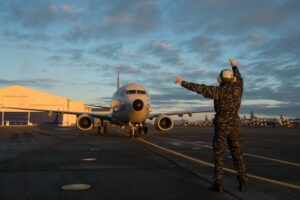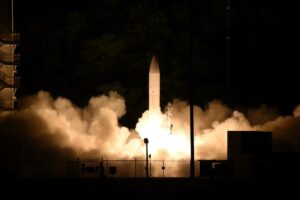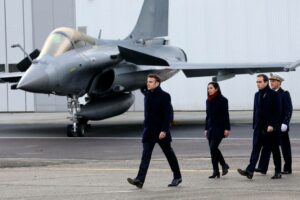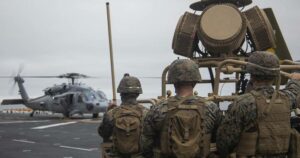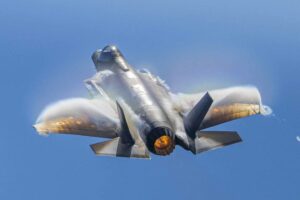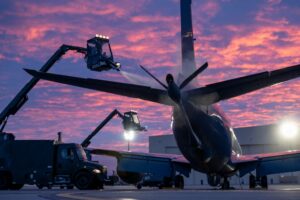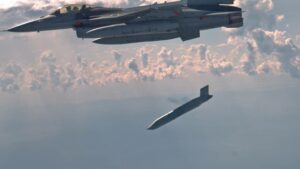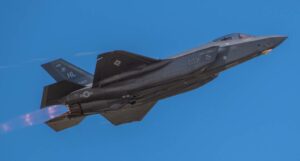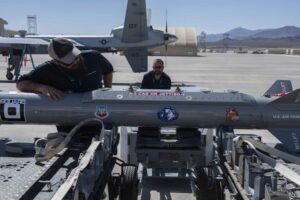SYRACUSE, N.Y. — Lockheed Martin is preparing to send the U.S. Air Force its advanced TPY-4 radar for further evaluation, following months of internal testing and tweaks at company facilities in rural New York.
The software-defined sensor, capable of detecting and tracking everything from small drones to jets to ballistic missiles, is slated to replace the decades-old TPS-75 radar as part of the Three-Dimensional Expeditionary Long Range Radar effort, or 3DELRR.
The Air Force picked Lockheed’s technology last year, beating out an offering from Northrop Grumman. The service at the time cited production and sustainment costs as well as overall capability in its decision-making.
“One thing that’s great about the TPY-4, as an example, is it’s a software-defined radar upfront,” Steve Allen, Lockheed’s program director for ground-based air surveillance, told reporters during a Nov. 2 tour of the company’s test range and assembly lines. “When we have changes of targets, or what we’re looking for, it becomes a lot of ‘how do we change our software?’”
Allen said he expects the TPY-4 to be pushed to its limits once it’s handed off at Eglin Air Force Base in Florida, with the service determined to discover “what this thing can really, really do.” Testing is expected to begin in the summer.
RELATED
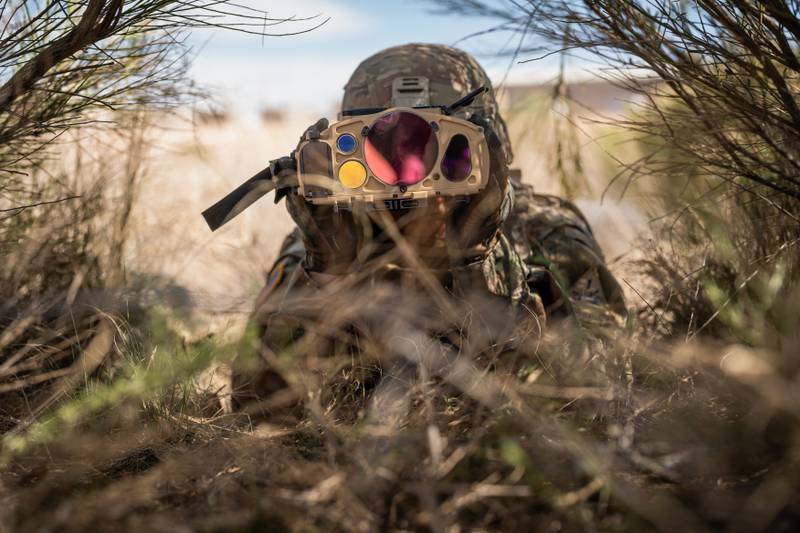
The TPY-4 features an active electronically scanned array, often shortened to AESA, and is available in both fixed and mobile variants. The many pucks or nodules on its face allow for multitasking and digital reprogramming.
Lockheed announced the successful production of the first TPY-4 in May 2022. At least three were being worked on during the November tour.
International interest in the TPY-4 is strong, according to company leaders. The Norwegian military is awaiting a delivery after signing a contract months ago. Others are queueing — or at least window-shopping.
“There’s been a lot of countries that are very, very interested,” Allen said. “They’re waiting for the Air Force to, kind of, get through their process to say, ‘OK, we’re comfortable with the maturity level,’ before they take the next step.”
Lockheed is the world’s largest defense contractor when ranked by defense-related revenue, earning more than $63 billion in 2022, according to Defense News Top 100 analysis.
Colin Demarest is a reporter at C4ISRNET, where he covers military networks, cyber and IT. Colin previously covered the Department of Energy and its National Nuclear Security Administration — namely Cold War cleanup and nuclear weapons development — for a daily newspaper in South Carolina. Colin is also an award-winning photographer.
- SEO Powered Content & PR Distribution. Get Amplified Today.
- PlatoData.Network Vertical Generative Ai. Empower Yourself. Access Here.
- PlatoAiStream. Web3 Intelligence. Knowledge Amplified. Access Here.
- PlatoESG. Carbon, CleanTech, Energy, Environment, Solar, Waste Management. Access Here.
- PlatoHealth. Biotech and Clinical Trials Intelligence. Access Here.
- Source: https://www.defensenews.com/intel-geoint/sensors/2023/11/16/lockheed-will-deliver-advanced-tpy-4-radar-to-air-force-for-evaluation/
- :is
- :where
- 1
- 100
- 11
- 2022
- 70
- a
- About
- According
- active
- administration
- advanced
- After
- ago
- AIR
- Air Force
- allen
- allow
- also
- an
- and
- announced
- ARE
- Array
- AS
- Assembly
- At
- available
- award-winning
- base
- BE
- becomes
- been
- before
- begin
- being
- Billion
- both
- by
- CAN
- capability
- capable
- Carolina
- change
- Changes
- cited
- cold
- comfortable
- company
- Company’s
- contract
- Contractor
- Costs
- countries
- covered
- covers
- cyber
- daily
- Decision Making
- Defense
- deliver
- Department
- Department of Energy
- determined
- Development
- digital
- Director
- discover
- do
- Drones
- during
- Earning
- effort
- electronically
- energy
- evaluation
- everything
- example
- expected
- expects
- Face
- facilities
- false
- Features
- First
- fixed
- florida
- following
- For
- Force
- from
- further
- get
- great
- Have
- he
- http
- HTTPS
- image
- images
- in
- interest
- interested
- internal
- IT
- ITS
- Jets
- jpg
- Kind
- largest
- Last
- Last Year
- leaders
- least
- Level
- limits
- Lockheed Martin
- Long
- looking
- Lot
- Martin
- maturity
- May..
- Military
- missiles
- Mobile
- months
- more
- namely
- National
- networks
- New
- New York
- news
- next
- Norwegian
- nov
- November
- nuclear
- Nuclear weapons
- of
- off
- offering
- often
- on
- once
- or
- Others
- our
- out
- overall
- part
- photographer
- picked
- plato
- Plato Data Intelligence
- PlatoData
- preparing
- previously
- process
- Production
- Program
- pushed
- radar
- range
- ranked
- really
- replace
- reporter
- revenue
- Rural
- s
- Said
- say
- Screen
- security
- send
- service
- shortened
- signing
- small
- Software
- South
- South carolina
- Step
- Steve
- strong
- successful
- summer
- surveillance
- Take
- targets
- Technology
- test
- Testing
- than
- that
- The
- their
- they
- thing
- this
- three
- Through
- time
- to
- told
- top
- Tour
- Tracking
- tweaks
- u.s.
- U.S. Air Force
- very
- Waiting
- war
- we
- Weapons
- WELL
- were
- What
- when
- will
- with
- worked
- world’s
- year
- york
- zephyrnet

